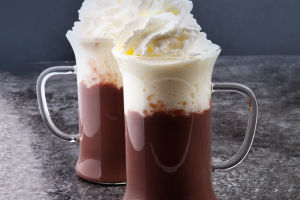The Paris macaron, an iconic French confection known for its delicate texture and vibrant colors, is much more than just a treat; it is a symbol of French culinary artistry.
The journey of this dainty dessert from its origins to its modern form is a story steeped in history, cultural exchange, and culinary evolution.
Origins of the Macaron
The macaron’s story begins in Italy. The term "macaron" comes from the Italian word "maccarone" or "maccherone," which means fine dough. These early versions of macarons were simple almond meringue cookies, made with sugar, egg whites, and ground almonds. They were brought to France in 1533 by Italian noblewoman Catherine de’ Medici when she married Henry II of France. Catherine’s Italian pastry chefs introduced the French court to many Italian culinary delights, including the macaron.
The Evolution in France
The original macarons were quite different from the delicate, sandwiched cookies we know today. They were single, round almond meringue cookies, often crunchy on the outside and soft inside. These simple treats became popular in French monasteries and convents. One of the most famous macaron legends involves the Carmelite nuns in Nancy during the French Revolution. To support themselves, the nuns baked and sold macarons, which became known as “Les Macarons des Sœurs” (The Macarons of the Sisters).
The Parisian Transformation
The macaron’s transformation into its modern form began in the early 20th century. Pierre Desfontaines, a pastry chef at Ladurée, a renowned Parisian patisserie, is often credited with creating the double-decker macaron. Inspired by a similar concept from the Dalloyau patisserie, Desfontaines sandwiched two almond meringue cookies together with a luscious ganache filling. This innovation added a new dimension to the macaron, making it more flavorful and visually appealing.
Ladurée’s macarons quickly became popular, setting the standard for what we now recognize as the Paris macaron. These cookies are characterized by their smooth, domed tops, ruffled “feet,” and a variety of fillings, from classic chocolate and vanilla to exotic flavors like rose, pistachio, and salted caramel.
The Rise to Global Fame
In the latter half of the 20th century, the Paris macaron began to gain international recognition. This was partly due to the global reach of French cuisine and the appeal of the macaron’s elegant aesthetics and delicate flavors. Ladurée opened its first international boutique in Tokyo in 1997, and other prestigious patisseries followed suit, spreading the macaron craze worldwide.
In the 21st century, the macaron became a symbol of high-end patisserie, featured in upscale bakeries and gourmet shops around the world. Chefs and bakers started experimenting with innovative flavors and textures, incorporating ingredients like matcha, yuzu, and even savory elements like foie gras and truffle.
The Art of Macaron Making
Creating the perfect macaron is considered an art form. The process requires precision and skill, from whipping the egg whites to the perfect consistency, to folding in the almond flour just enough to achieve the right texture, and finally, baking them to create the signature smooth top and ruffled feet. Even the slightest mistake can result in cracked shells, hollow centers, or uneven feet.
Macaron makers, known as macaronniers, often guard their recipes and techniques closely. Each step, from the preparation of the meringue to the aging of the finished macarons (which enhances their texture and flavor), is crucial. The result is a dessert that is as pleasing to the eye as it is to the palate.
The Paris macaron, with its rich history and evolution, embodies the essence of French patisserie. From its humble beginnings in Italy to its transformation in the kitchens of Paris, the macaron has become a beloved treat worldwide. Its journey reflects centuries of culinary innovation and the enduring appeal of French elegance and craftsmanship. Today, the macaron continues to enchant dessert lovers with its delicate balance of flavors and textures, securing its place as a timeless confectionery masterpiece.


